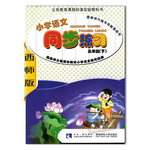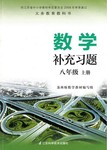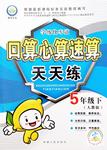题目内容
阅读理解。
John is 14 years old. He is a student of Grade Eight. He was a very active and happy boy two years
ago. But everything changed after he started to play computer games. He never plays basketball or
football with his friends any more(再也). And when he sits in the classroom, he can't listen to the teachers. He sleeps in class. And he spends less and less time in studying. So he gets bad marks in tests. But he
is very different after school is over. He stays in the net bar until it is closed(关闭的).Ah, he loses himself
in(沉迷于)computer games. His parents can do nothing to stop him. Every morning in the school, when
we see that he is so tired after a night's "busy working", we really feel sad. He is too tired!
ago. But everything changed after he started to play computer games. He never plays basketball or
football with his friends any more(再也). And when he sits in the classroom, he can't listen to the teachers. He sleeps in class. And he spends less and less time in studying. So he gets bad marks in tests. But he
is very different after school is over. He stays in the net bar until it is closed(关闭的).Ah, he loses himself
in(沉迷于)computer games. His parents can do nothing to stop him. Every morning in the school, when
we see that he is so tired after a night's "busy working", we really feel sad. He is too tired!
1. John was ______two years ago.
A. sad and unhealthy
B. active but bored
C. active and happy
D. healthy but sad
B. active but bored
C. active and happy
D. healthy but sad
2. John changed a lot because ______.
A. he couldn't get good grades
B. he played computer games
C. he had to work for money
D. he didn't exercise any more
B. he played computer games
C. he had to work for money
D. he didn't exercise any more
3. Every morning John feels______.
A. tired
B. healthy
C. happy
D. relaxed
4. John ______ plays basketball with his friends now.
A. usually
B. often
C. always
D. never
B. often
C. always
D. never
5. Which of the follo wing is TRUE?
wing is TRUE?
 wing is TRUE?
wing is TRUE?A. John wasn't a good student two years ago.
B. John often sleeps in class at school.
C. John's parents don't love him.
D. John is busy working every day.
B. John often sleeps in class at school.
C. John's parents don't love him.
D. John is busy working every day.
1-5 CBADB

练习册系列答案
 同步练习河南大学出版社系列答案
同步练习河南大学出版社系列答案 同步练习西南师范大学出版社系列答案
同步练习西南师范大学出版社系列答案 补充习题江苏系列答案
补充习题江苏系列答案 学练快车道口算心算速算天天练系列答案
学练快车道口算心算速算天天练系列答案
相关题目
| 阅读理解。 | ||||||||
| ||||||||
| 1. If you are interested in folk music, yon might choose the book _______. | ||||||||
| A. The Snowman B. Madame Bovary C. Electric Eden D. Between Shades of Gray | ||||||||
| 2. The Snowman most probably tells _______. | ||||||||
| A. a life story B. a disaster story C. a love story D. a detective story | ||||||||
| 3. We can infer (推荐) that all the books above are _______. | ||||||||
| A. available B. for adults C. expensive D. newly written |



